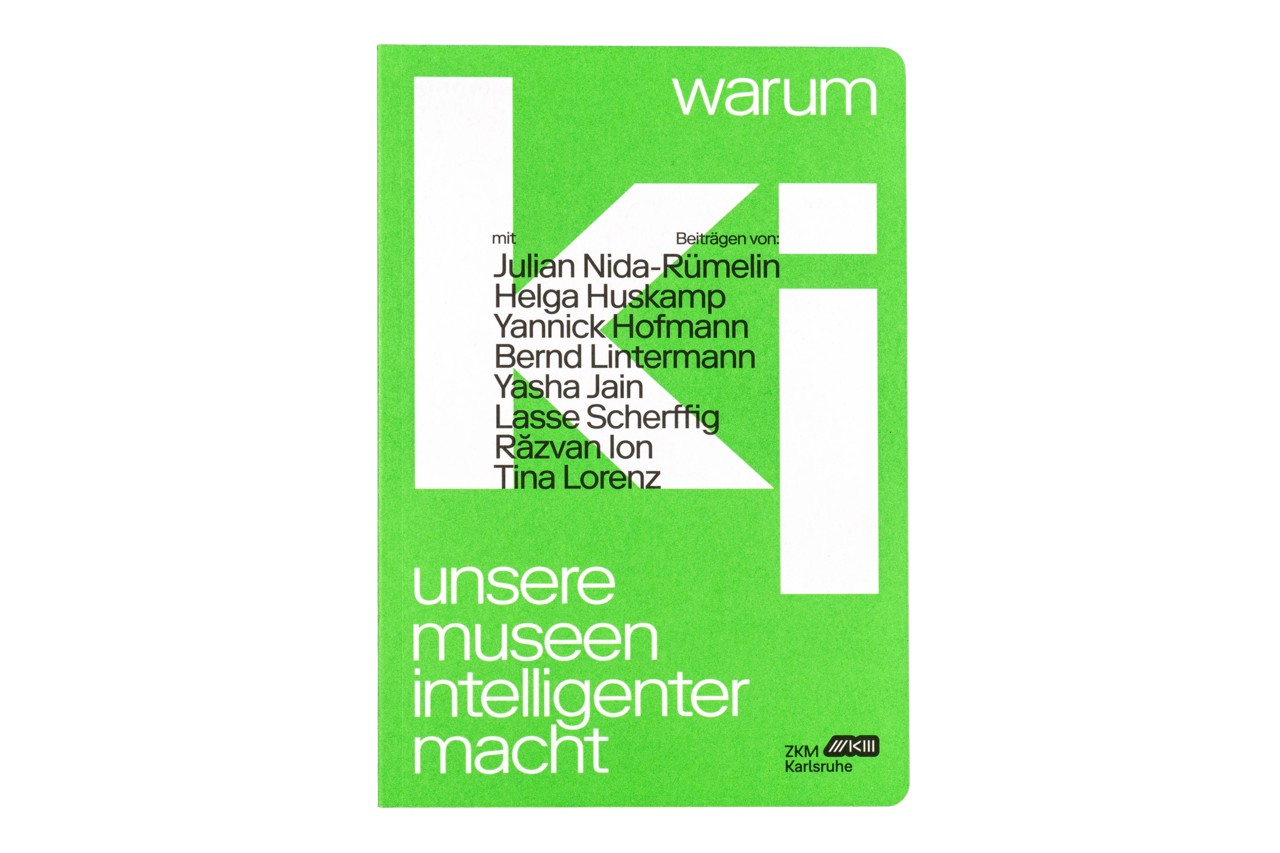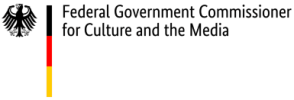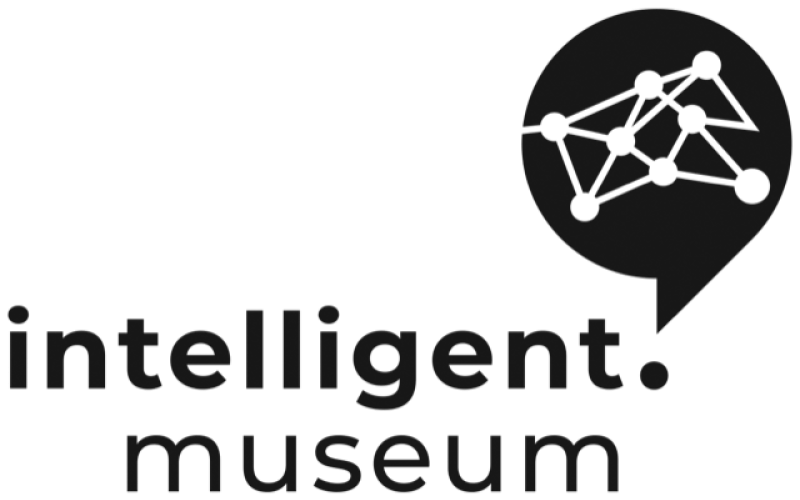- Brochure
warum ki unsere museen intelligenter macht
ZKM | Zentrum für Kunst und Medien Karlsruhe (Hg.)
- Type of publication
- Brochure
- Author / Editor
ZKM | Center for Art and Media (ed.)
- Physical Description
- Softcover, 16 x 23 cm, 96 pages, Illustrations
- Language
- German
- Year
- 2024
- ISBN
- 978-3-928201-67-4
- Content
Can artificial intelligence do art? Julian Nida-Rümelin, long-standing board member of the German Ethics Council 'Mensch und Maschine', answers this question, which has been discussed since the breakthrough of generative AI, with a clear "no". However, Lasse Scherffig, head of a cross-university research project on artificial intelligence in art and design at the TH Köln, uses many examples from recent years to show that it has long since become a useful tool for artists.
This is also shown by the numerous works of art that have been created as part of the intelligent.museum project from 2020 to 2024 at the ZKM | Centre for Art and Media in Karlsruhe and the Deutsches Museum Nuremberg. Whether AI-generated radio news, as in the 'Botcast' project by Yannick Hofmann and Yasha Jain, the autonomous robots of the 'Empathy Swarm' by Katrin Hochschuh and Adam Donovan, or the work 'Patterns of Heat' by Gaëtan Robillard, which emits more heat via a floor installation, the more untruths the artificial intelligence finds on social media about climate change.
„warum ki unsere museen intelligenter macht“ [why ki makes our museums smarter] is a practical playbook aimed specifically at museum and cultural institution staff who are considering integrating AI into their daily work.
In addition to socio-political and artistic perspectives, it is dedicated to the promising cooperation between humans and AI in the context of museums - from the use of artificial intelligence in exhibition spaces, which Bernd Lintermann outlines using the example of the LiDAR technology developed at the ZKM, to the potential in the field of curation, which the creator of the first AI curator, AI JARVIS, Răzvan Ion, is committed to, to the structural and cultural policy consequences, which Helga Huskamp and Tina Lorenz call for in their contributions on the successful use of AI in cultural institutions.
In addition to the challenges posed by the presence of AI in our institutions, the publication also highlights the great potential of this 'revolution without notice' and invites its readers to use the results of the intelligent.museum project and its open questions as an impetus for their own reflections. How can AI make cultural institutions more accessible to visitors? What role should cultural institutions play in the social reflection of new technologies?
Team
Idea and concept: Nicolas Flessa
Editor: Nicolas Flessa
Project lead: Sabine Jäger
Illustrations: Benedikt Rugar
Graphic design: studio +fronczek (Sascha Fronczek + Jana Renger)
Sponsors
In collaboration with the Deutsches Museum Nuremberg. Funded by the Kultur Digital programme of the German Federal Cultural Foundation.
Funded by the Federal Government Commissioner for Culture and the Media.



